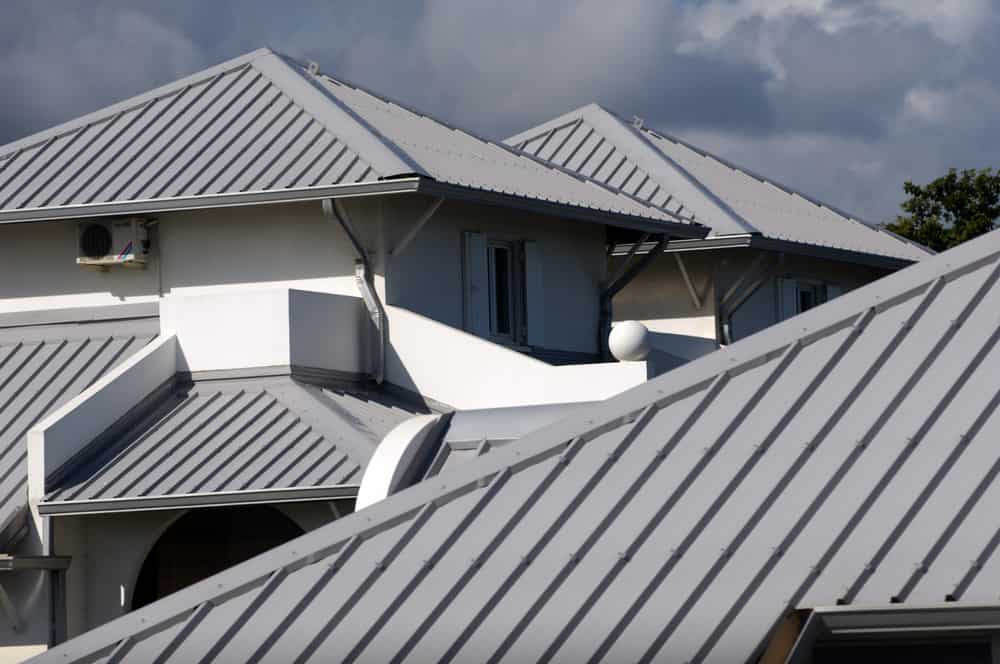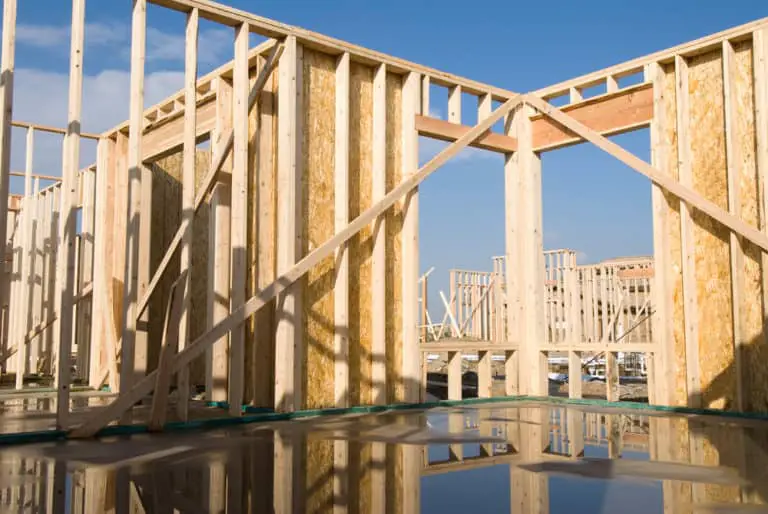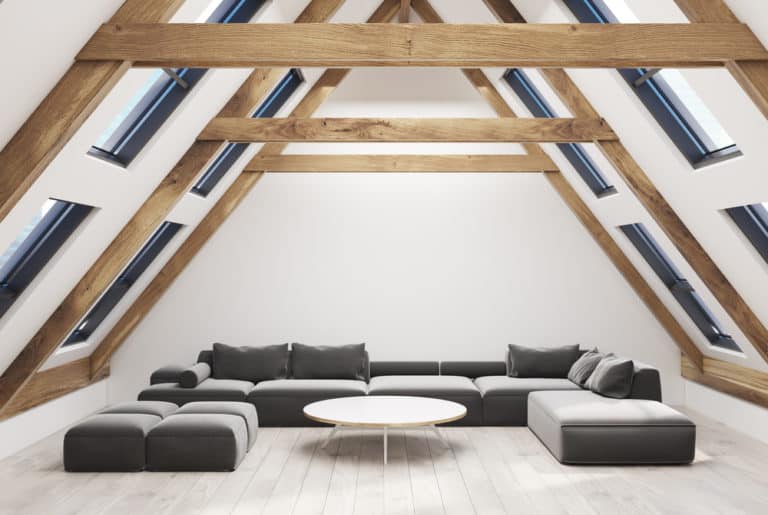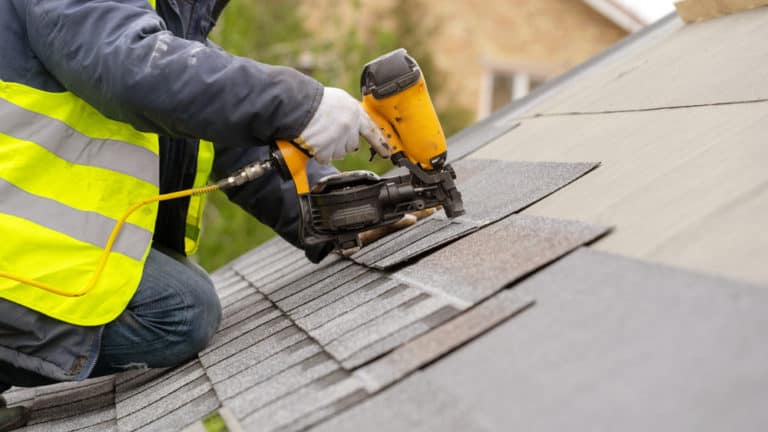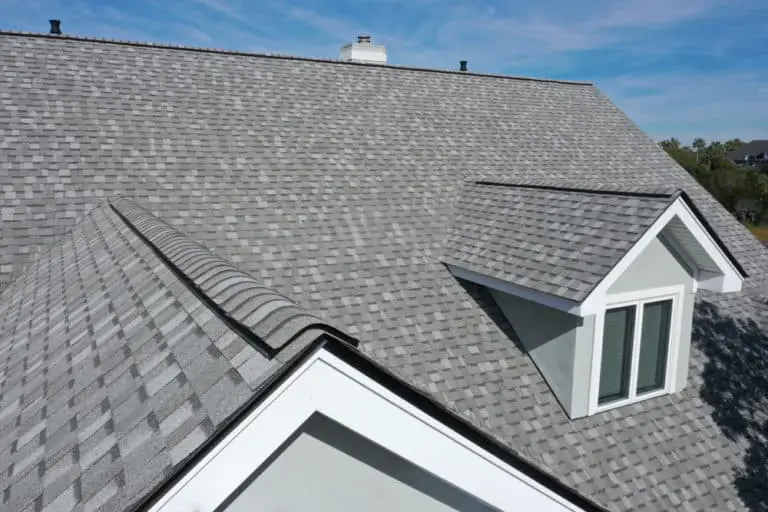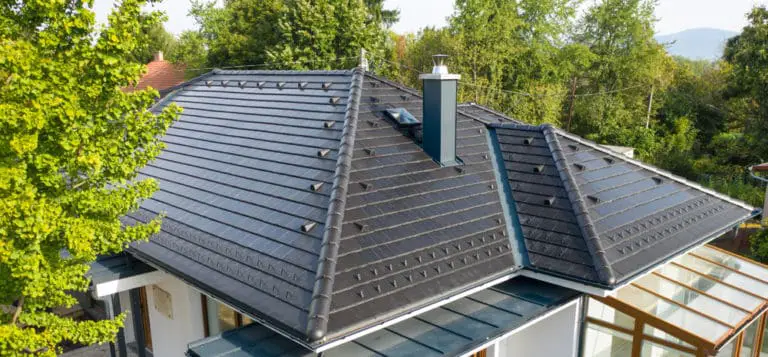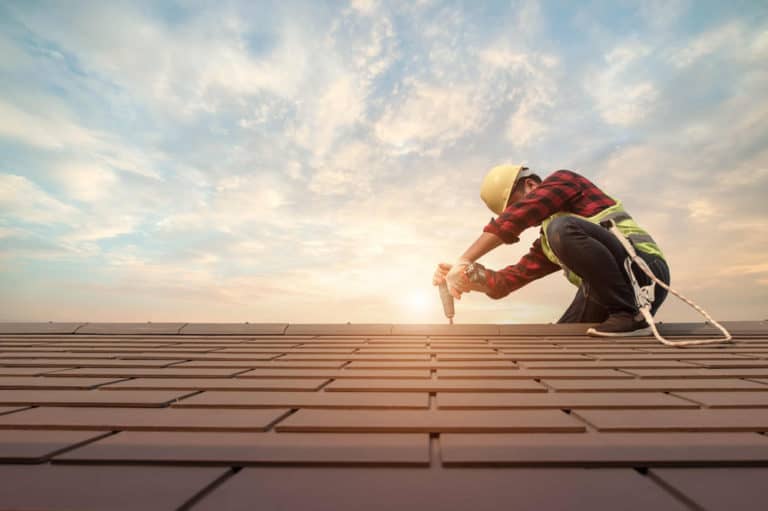What Color Metal Roof Lasts the Longest?
Keeping the crown glory (your roof ) in good condition is a duty all homeowners take to preserve the integrity of their homes. Today’s metal roofs are no longer the corrugated barns; now, you can choose from tin, zinc, aluminum, copper, galvalume, or galvanized steel, in a dizzying array of colors, finishes, and even shapes! Today’s metal roofing comes in more than 100 different colors- the variety surpasses that of the conventional asphalt shingle.
The color metal roof that lasts the longest is the natural galvalume. Galvalume is the most popular exotic metal roof that has a distinctive natural color that sets it apart. Galvalume roofing material combines three important metals —steel, aluminum, and zinc that hold paint finishes well.
Choosing a color for your roof that has a distinction from your home’s brick color will help your home stand out and demand attention. Still, selecting complementary colors will create a color scheme that will convey a more classic look and last long.
How to Choose a Color Metal Roof that Lasts the Longest
Choosing a color metal roof is an exciting process but, it can be overwhelming because there are so many options. It’s essential to select the color that will look great in your home and last the longest. Here are various aspects you should review when choosing a color metal roof.
Energy Efficiency
Not only does the color metal roof impact the appearance of your building, but it also plays a role in your energy costs. Lighter roof colors reverse more solar heat than dark-colored ones. For example, if you live in a warm climate by chance, you can benefit from the golden bronze, white, light green, beige, or blue metal roof.
You can save up more than 30% on your monthly energy bills with a light-colored roof. Light-colored metal roofs can be more relaxed than asphalt shingle roofs by 50 to 60 degrees Fahrenheit. Still, metal roofs in dark colors can have high energy efficiency ratings if you live in a chilly climate or your house has a well-ventilated attic space.
Durability
The color of a metal roof fades over time because the synthetic compounds in the paint’s pigments start to break down from extreme exposure to the sun. While fading will ultimately occur with any color, some colors where color loss is less prominent. Let’s go over a few considerations and categories that make color fading less obvious.
- Organic vs. Inorganic Pigments-color metal roofs made from organic pigments fade more quickly than those made from inorganic pigments. In general, colors that contain organic compounds are the least durable because sunlight causes them to degrade and break down into smaller chemical components. On the other hand, color metal roofs with mineral-based or inorganic pigments last longer but have a limited range of hues available.
- Lighter vs. Darker Colors-the darker the color of a metal roof, the more quickly it will fade. Dark colors absorb sunlight and heat up much faster than lighter hues that reflect them away. A white or pastel-colored metal roof lasts longer than its dark counterparts but provides less insulation against extreme temperatures.
- Matte vs. Glossy Colors-flat paints tends to lose their color more quickly than shiny ones because they reflect less sunlight. However, you use flat paint colors on roofs that are not in direct contact with the sun’s rays or adequate ventilation in an attic space or roof deck.
Geographical Locations
The right color allows the roof to better blend in with the surroundings: Zinc roofs are more resistant to ultraviolet (UV) light and corrosion and last longer than other types of metal roofs.
If, in any case, you live in an area with winds or hurricanes that can cause damage, choose an aluminum metal roof as it resists hail better than those made from steel or copper. In tropical areas, bright and vibrant colors like slate blue, copper penny, and sage green are the best.
Building’s Architecture
The architecture of a building influences the trend of color metal roofs in different ways. For example;
-Tudor-style houses look best with slate blue or black metal roofs, while colonial homes have a red clay metal-tile roof.
-A Prairie house features horizontal lines complemented beautifully by dark brown, green, and tan colors.
-Contemporary homes work best with galvanized steel metal roofs. Other recommended color choices for this architectural design are the lighter shades of green that represent nature.
Paint Finish Quality
The quality of the paint finish can also affect color fading. Many metal roofs come with a factory-applied coating that helps protect the surface against UV rays, corrosion, and other elements. If your roof is not painted or has existing worn-out coatings, you will need to apply another layer before painting. To prevent further damage due to corrosion, use a paint coating with zinc or aluminum flakes mixed into the color.
Price
Metal roofing is highly-priced than asphalt shingle roofs, but it may be worth the investment because of its durability and energy efficiency. The cost will vary depending on which metal type you choose and the contractor that installs your metal roof.
Types of Color Metal Roofs
Choosing the right color metal roof is a big decision. But don’t sweat it because we got you covered! Here are various types of color metal roofs.
Shake
Shake is a type of metal roofing made from natural or synthetic fibers bound together by asphalt. There are four colors of shake metal roofs in popular shades of gray and brown, providing the most fantastic roofing color options for various home architecture styles.
Slate
Slate roofs come in different colors: green, brown, gray, and tan. These are rustic-like shingles but designed to last longer. These roof styles are the most expensive because of the high installation costs and long lead times needed to produce each design.
Bare Metal
These are the most durable color metal roofing options because they come with a shell of steel or aluminum that protects them from strong winds and other weather conditions. Five of the most common materials used in metal roofing are galvalume, aluminum, zinc, copper, and stainless steel.
- Galvalume roofing material integrates three essential metals used in roofing today—steel, aluminum, and zinc. One of the captivating characteristics of the Galvalume roof is that galvalume can come in an array of different colors.
- Copper roofs are the most expensive types of metal roofs because it requires hand-craftsmanship to produce. Copper has a unique natural color that ranges from dark green to blue-gray. Copper is a durable element and can withstand several decades as a roof. Copper also works well in locations with heavy snow, frequent rainfall, and strong winds. Copper is also a naturally sourced metal, and you can use it in its original mined color.
- Aluminum roofs are the lightest-weight metal roofs. Architects or installers do not recommend using aluminum roofing in its natural color (silver/gray). As the metal ages and undergoes weathering, it doesn’t hold its original color and often becomes washed out and spotty. The best method to overcome this issue is to buy resin-coated roofing coils or panels, which will age much cleaner over time.
- Stainless steel roofs tend to be expensive and luxurious. It is the sleekest, modern-looking option that requires no maintenance or painting to protect it from corrosion or fading. Stainless steel comes in various finishes, making it easier to match a multitude of other building materials. It can range from a dull, subtle gray similar to zinc roofing to a highly reflective, polished finish resembling a mirror.
- Zinc roofs are the most affordable color metal roofs. Zinc is also a good choice for homeowners who want to add curb appeal and value to their home while avoiding the high price tag that can sometimes come with other metal roofing types. Zinc has its outer protective layer, which prevents corrosion, scratching, and panel markings. If any element scratches the surface of the zinc roof, the metal’s protective layer fixes and corrects itself over time.
Standing Seam
Standing seam metal roofs are long-lasting options that can last up to 50 years or more depending on the grade of materials used in construction. These metal roofs have a low profile, so they work well on modern homes with flat or sloping surfaces that require little maintenance. Additionally, these roofs don’t conduct electricity which makes them an energy-efficient option.
Both the cost of the panel and the installation cost is about fifty percent more than traditional roofs. Most standing seam roof metals are available in both SMP paint finishes, and Kynar paint finishes. SMP is the most popular finishing option because it helps prevent corrosion and rust. Standing seam metal colors include; Englert standard colors, Englert premium colors, and custom colors.
Corrugated
These metal roofing options are the most affordable of all types because they require less material to manufacture, which reduces installation costs. Popular color choices for corrugated roofs include black, brown, green, and red/orange, complementing various home architecture styles such as modern or traditional homes.
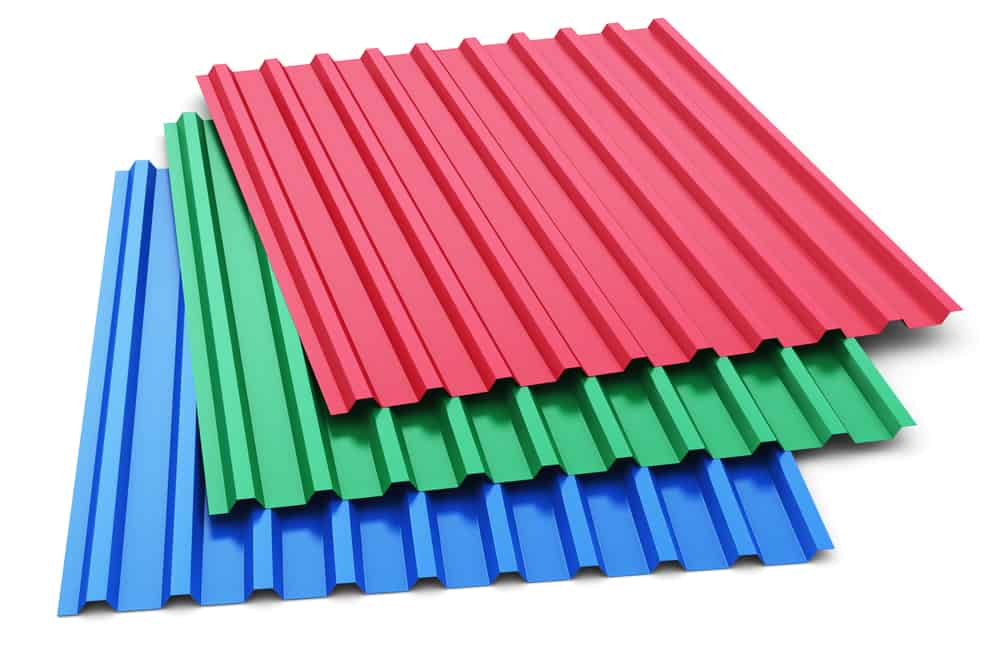
How to Extend the Life of a Metal Roofing Color?
You have decided on the color metal roof that will look great for your home; now, you should take some steps to help ensure it lasts as long as possible. Here are a few tips:
Use Paint Finishes for the Color Metal Roof
They help maintain the roof’s appearance and extend its longevity. The paint finishes include; Polyvinylidene fluoride (PVDF), Fluoroethylene vinyl ether (FEVE), Plastisol, and Silicone-modified polyester (SMP).
- Polyvinylidene fluoride (PVDF) or Kynar 500 paint finish is the most common and cost-effective option. It provides good protection against corrosion, stains, and scratches. Silicone-modified polyester (SMP) paint finish is a more expensive option that offers better protection against corrosion, stains, and scratching than PVDF finishes. In most cases, experts apply SMP paints to less expensive metal roofing with warranties that cover color defects for more than 20 years.
- Fluoroethylene vinyl ether (FEVE) – FEVE resins comprise different vinyl ether and fluoro-olefin units, which protect against oxygen, oxygen, and chloride. FEVE resins are prominent because of their strong bonding properties to different types of metal roof materials. Still, they can devalue faster in environments with high UV exposure.
- Plastisol – Manufacturers make plastisol resin with plasticized vinyl applied to a metal coil used in a very corrosive or extreme environment. Plastisol shields against degradation from the weather, but be aware that this resin can change the pigment of bright and vibrant colors.
Use Roofing Sealant
A roofing sealant is a protective coating that can help protect and extend the life of metal roofs. It helps prevent rust, mold growth, and leaks which prolongs the lifespan of your color metal roof.
Maintain Metal Roof
Cleaning or maintaining your roof on an annual basis will allow you to detect any problems early enough before they become serious. Ensure to check any mechanical units, vents, or heat stacks as any buildup of residue resulting from a faulty unit can compromise your color metal roof.
Install the Color Metal Roof on a Well-ventilated Space
Sunlight causes discoloration of aluminum roofs over time. If possible, choose an area that is shaded from the sun as much as possible. However, this may not be a good choice for homes in warmer climates because heat can cause expansion and contraction of aluminum panels which causes them to buckle or warp over time.
Pros of Color Metal Roofs
The lifespan of a metal roof is as much as 50 years.
- Warranties- Most roofs come with guarantees that protect against leakage, rusting, or corrosion for more than 20 years and color defects for more than 30 years.
- Lightweight- Metal roofs are lightweight, making them easier to install than asphalt shingle, slate tiles, or clay tiles. It means you will spend less on installation costs.
- Aesthetic Appeal- Color metal roofs look great on modern home architecture and can help give your house a stylish appearance. They are available in more than 100 color choices to match the style of any house, from traditional reds or greens that complement ranch homes to bold shades such as blue or green that work well with contemporary homes.
- Sustainability- Manufacturers produce color metal roofs with up to 100 percent recycled material. It means they contribute to environmental sustainability by prolonging the life of your roof and protecting against landfill waste.
- Energy-efficient- some color metal roofs reflect sunlight and help keep your house cool during hot summer months. Shingle or tile roofs absorb the sun’s heat which makes your home warm in summer and cold in winter, driving up energy bills
Cons of Color Metal Roof
- Color metal roofing is expensive compared to asphalt shingle, slate tiles, or clay tiles.
- Colors fade over time, and metal roofs do not age gracefully like other materials such as slate or clay roof tiles, which can add to your costs if you need repairs done in the future.
- Roof maintenance is required with metal roofing to prevent corrosion of rooftop units, vents, and heat stacks. Metal roofs are known to buckle or warp when exposed to extreme heat. They can also develop leaks in the absence of proper repair and maintenance.
Conclusion
Galvalume, zinc, aluminum, stainless steel, and copper are the best solutions for metal roofing needs. A Galvalume roof is durable and can outlast asphalt roofs by years, making it the color metal roof that lasts the longest. Galvalume comes in over 100 colors and its backed by a lifetime warranty that protects against rust, corrosion, leaks, or buckling. Knowing the specific and unique aspects of a residential or commercial structure is the best place to start when choosing the long-lasting metal roofing material.
Sources
- https://www.provia.com/metal-roofing/slate-colors
- https://sheffieldmetals.com/learning-center/galvalume-vs-galvanized-metal/
- https://www.thisoldhouse.com/roofing/21345815/metal-roofs-styles
- https://www.westernstatesmetalroofing.com/blog/what-is-corrugated-metal-roofing
- https://www.westernstatesmetalroofing.com/blog/metal-roof-colors-fade
- https://www.roofingcalc.com/metal-roof-colors/?cf_chl_jschl_tk=pmd_P491T7zSYLMkVF0eYhZASDGw2u4lrWCqotlw_kN6r8c-1633239373-0-gqNtZGzNAiWjcnBszQil
- https://www.thisoldhouse.com/roofing/21345815/metal-roofs-styles

